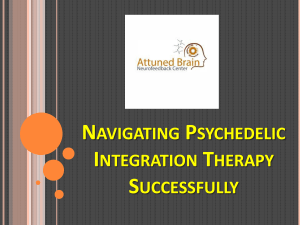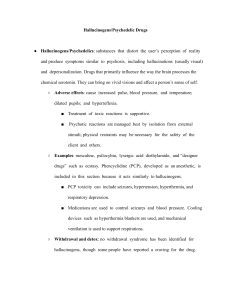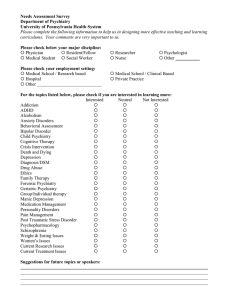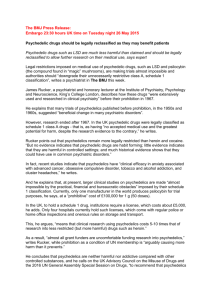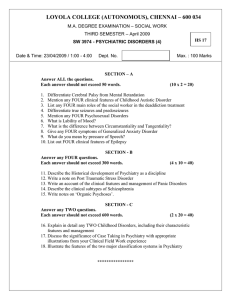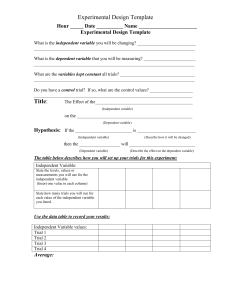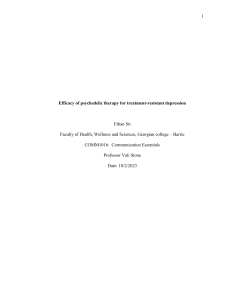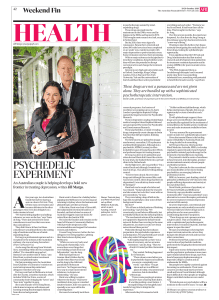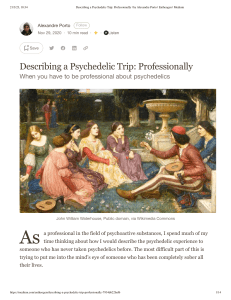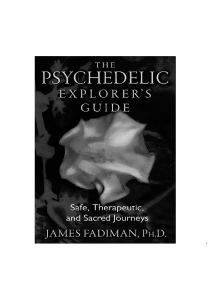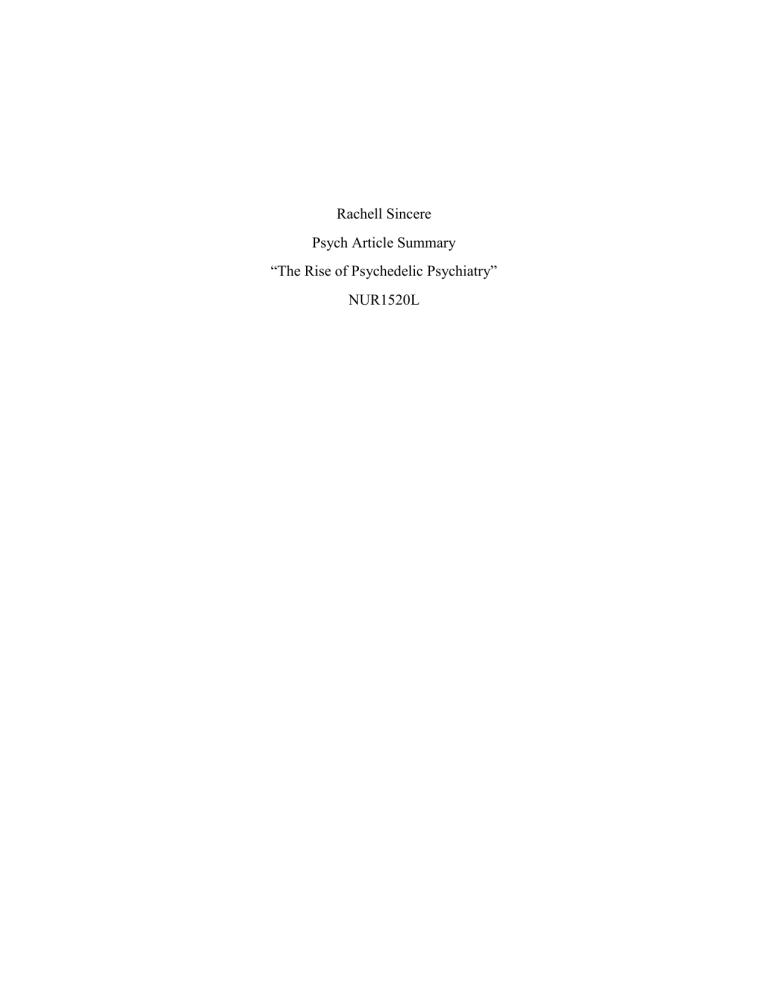
Rachell Sincere Psych Article Summary “The Rise of Psychedelic Psychiatry” NUR1520L Over the last few years, a numerous amount of clinical trials have been launched to study the effectiveness of illicit psychedelic drugs in treating mental-health disorders. Drugs that were previously considered dangerous drugs of the counterculture such as psilocybin, lysergic acid diethylamide (LSD), and MDMA are gaining acceptance from researchers at respected institutions. So far, many of the studies have supported the theory that it could provide therapy for various mental disorders such as major depressive disorder, PTSD, and anorexia nervosa. The article does note that the favorable results were achieved under carefully controlled conditions and mentions the possible risks such as a lasting psychotic reaction that occurred more often in people with a family history of psychosis. The study of psychedelics as a treatment for mental disorders is not a novel practice; it has initially been tested in the 1950s and 1960s prior to the drugs being banned due to abuse by recreational users. The results of the studies have remained consistent. They suggest a new theory that suggests the drugs method of action is not necessarily flooding the brain with serotonin, but stimulating neuroplasticity. The article closes by touching on the current clinical hurdles researchers face in translating the results of the trials into actual treatments. These include the challenge of standardizing the way the trials are controlled, developing a training plan for psychiatrists who’ll be in charge of prescribing and safely administering the treatment, as well as pinpointing which psychedelic drugs will be the most effective for which mental condition. Reference Tullis, P. (2021). The Rise of Psychedelic Psychiatry. Nature. https://doi.org/https://media.nature.com/original/magazine-assets/d41586-021-00187-9/d41586-02100187-9.pdf
